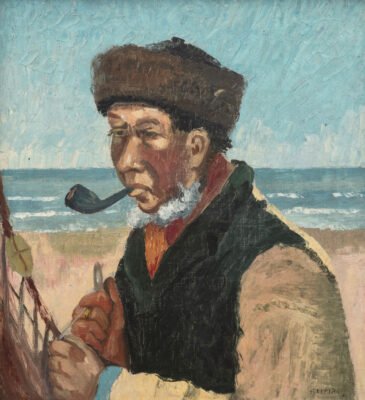Tennis star Venus Williams has teamed up with the Carnegie Museum of Art in Pittsburgh to host the institution’s new podcast, “Widening the Lens: Photography, Ecology, and the Contemporary Landscape.”
The six-episode series is a companion piece to the institution’s exhibition of the same name, which opened in May and is on view through January 2025. The show features 19 artists, including Tomás Saraceno, Justine Kurland, and Cyprien Gaillard. It represents the fourth cycle of the museum’s Hillman Photography Initiative, launched in 2013 to bring new ideas about photography to museum audiences.
Both the podcast and the exhibition explore our nation’s environmental history, and the role photography has played in documenting the country’s changing landscape, as well as its potential power in shaping the future as we look to combat climate change.
It’s a complex, wide-ranging topic that Williams, who has a longstanding interest in art, tackles with thoughtfulness and gravitas. The seven-time Grand Slam winner serves as listeners’ guide, introducing each guest—who include artists from the show such as Raven Chacon, Xaviera Simmons, and Sky Hopkina—and offering commentary and context throughout their conversations.
Williams has previously done projects with Pace gallery in New York and Smithsonian’s National Portrait Gallery in Washington, D.C., and even wrote about Simone Leigh for the sculptor’s inclusion on the 2023 Time 100. I spoke to Williams about the podcast, its environmental themes, and her own approach to art, including her personal collection.
This is a podcast about art, specifically photography, and environmental issues. Why have these two topics in conversation?
Photography offers such a powerful lens to examine these issues because the lens truly captures our environment. And these artists have taken this opportunity to share their work, share their talent, share their perspective, and through that, to create a very critical and dynamic dialogue to talk about our relationship to the environment.
They ask the important questions about our environment, about our past and about the changed landscapes and our ability to hopefully adapt our attitudes and our practices, and also to accept our complicity in our changing environment. I’m really proud to help amplify these voices as they help us consider new, alternate ways to relate to our world through photography.
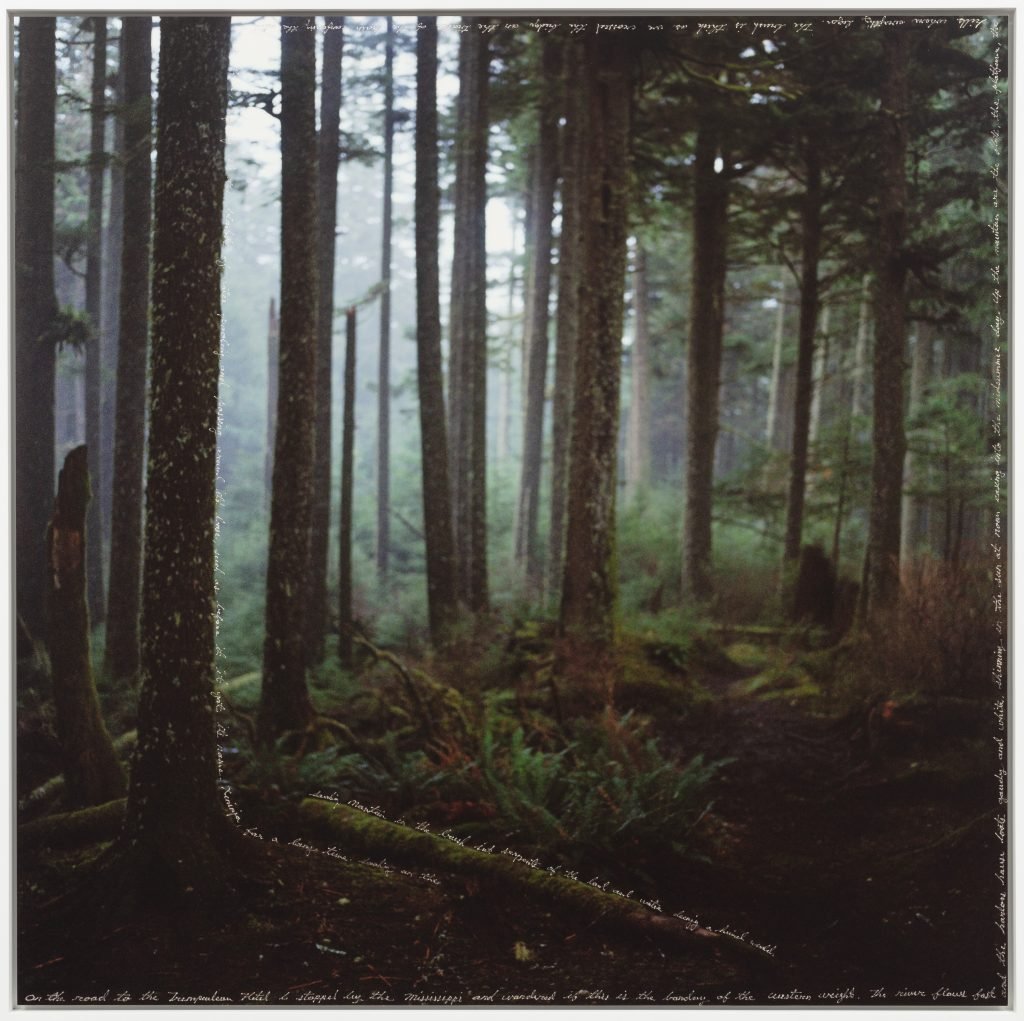
Sky Hopinka, Cowboy Mouth 2 (Yoiréreginagere), 2022. Collection of Lori Perlow, New York. Photo ©Sky Hopinka, courtesy of the artist.
I think it’s easy to be skeptical about the “power” of art, but the podcast really does help illustrate the ways in which images have been a profound force in shaping our history as a nation. Was that something that surprised you at all in working on this podcast, and can you talk a little bit about this?
One of the most surprising things that our podcast goes into what most people wouldn’t expect would be some of the perspectives on colonialism—that great expansion West and how art was a big catalyst to that. We look at Ansel Adams and the beautiful landscape. It’s important for us to know our history and to learn through our disappearing landscapes. While it’s disheartening, it’s something we have to see, it’s something we need to know. When you look at our past, that’s how you know what could happen in the future.
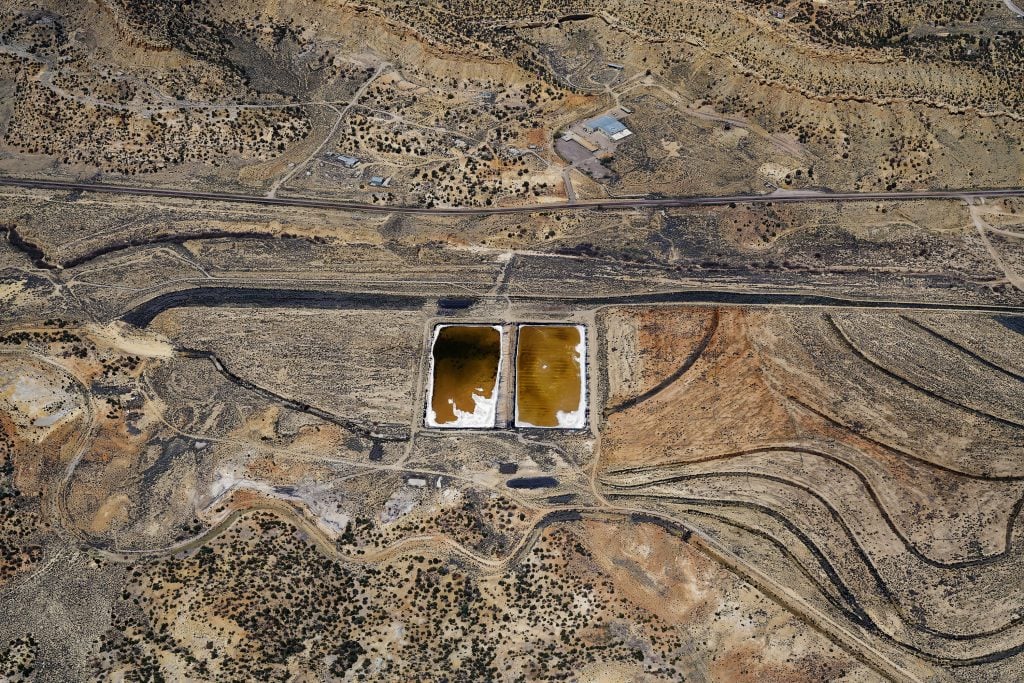
Fazal Sheikh, 35°24’36.45″N/107°48’0″W, Ambrosia Lake Uranium Disposal Cell, Grants Region, New Mexico (2017). Collection of the Carnegie Museum of Art, Pittsburgh. Photo: ©Fazal Sheikh, courtesy of the artist
Did the conversations in the podcasts give you any reason to be hopeful about our situation as a planet?
I’m always hopeful. I’m a hopeful person, so I can’t help it. That’s a good thing, I think. But I’m also hopeful that these artists will be given an even larger platform to show their work, which is so important, and elevate their voices on the things that really matter. [It’s about] our world that we live in. I can’t think of too many more things that are important. This is a platform for our contributors to forge meaningful connections, to start a discussion, and to inspire change.
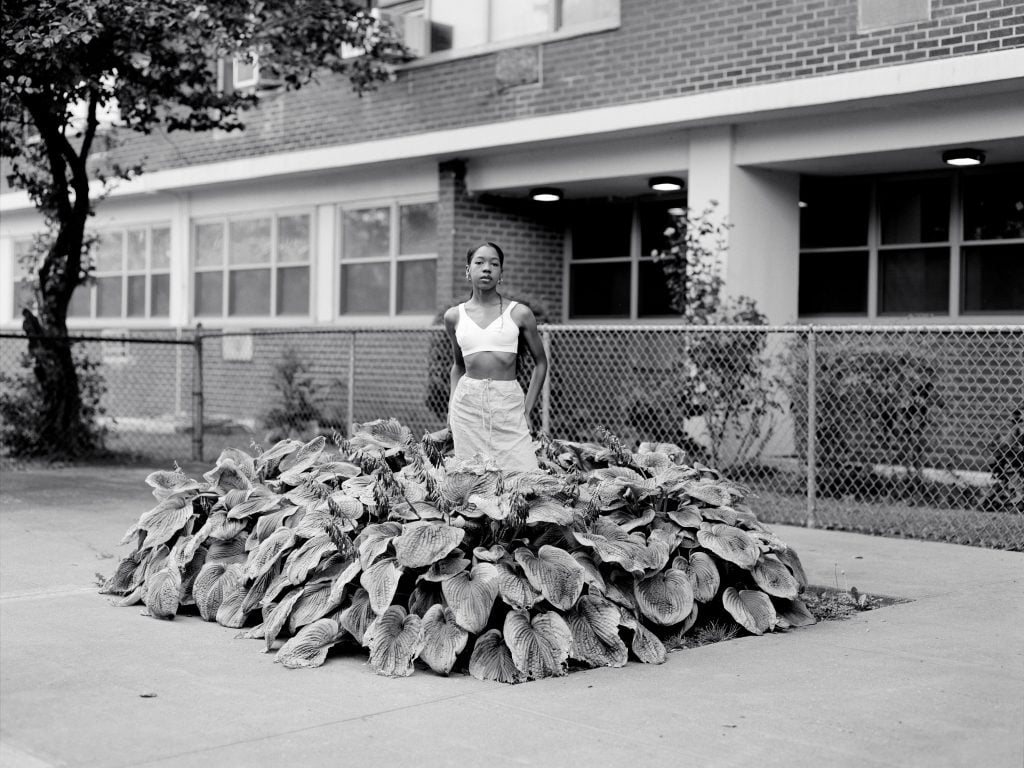
Chanell Stone, In Search of a Certain Eden (2019). Collection of the Carnegie Museum of Art, Pittsburgh. Photo ©Chanell Stone.
It’s so amazing that they had so many different people on the podcast. It must have been like herding cats trying to get so many important artists involved and recording. Was there a part of the conversation that was really illuminating or enlightening for you that that really sticks out in your mind?
I think art is for everyone. Our lives are expanded and enlarged through participating in art, whichever way that might be. So, being able to connect these artists with audiences with a meaningful dialogue, that’s very important in advocating change and bringing attention to our past and present.
I learned so much. I find the podcast and everyone who contributed to it to be so captivating and mesmerizing. As you listen to everything and their stories and their perspective behind their photographs, it just widens your world. And it makes you so aware of what’s happening around you. It’s all the things we didn’t learn in school.

Installation view of “Widening the Lens: Photography, Ecology, and the Contemporary Landscape” at the Carnegie Museum of Art, Pittsburgh (May 11, 2024–January 12, 2025); Photo by Zachary Riggleman, courtesy of the Carnegie Museum of Art, Pittsburgh.
And I have to say, you really do such an amazing job hosting it! As you said, art is for everyone. I wonder, was there ever a time when you felt intimidated by the art world? Would you have any advice for someone who does feel that way, but is hoping to learn more about contemporary art?
I think everyone feels a little intimidated by the art world, especially when you first go into it. You feel maybe it’s not necessarily for you. For me, it was like, “where do I start?” Starting is the toughest part. I always just tell people just to pick artists that you like.
I’m a big proponent of learning for yourself and just going to see things and developing your taste and seeing what your eye likes. Go to museums and galleries, visit shows, whether the artist is renowned or just starting out, and just put your fingerprint on it. And once you start that process, it all just falls into place.
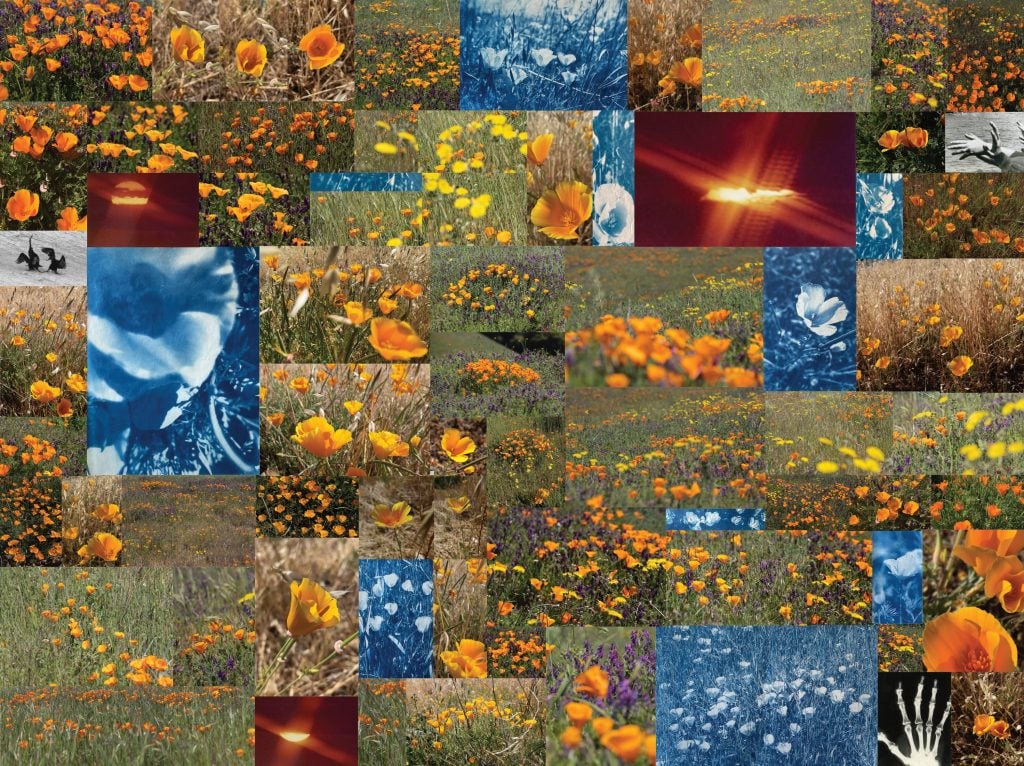
Melissa Catanese, Fever fields (California poppies, hands, seabirds, sun), 2021–2023. Commissioned by Carnegie Museum of Art, Pittsburgh. Photo ©Melissa Catanese.
And I’m also a big proponent of art history too. It really opens your eyes to how we got here to even be able to experience the arts in the way that we do today, because that wasn’t always possible.
It’s really just about diving in, and that’s what I did. And also developing a community of people that you can talk to and learn from. I think there’s nothing more exciting than just having that community around you.
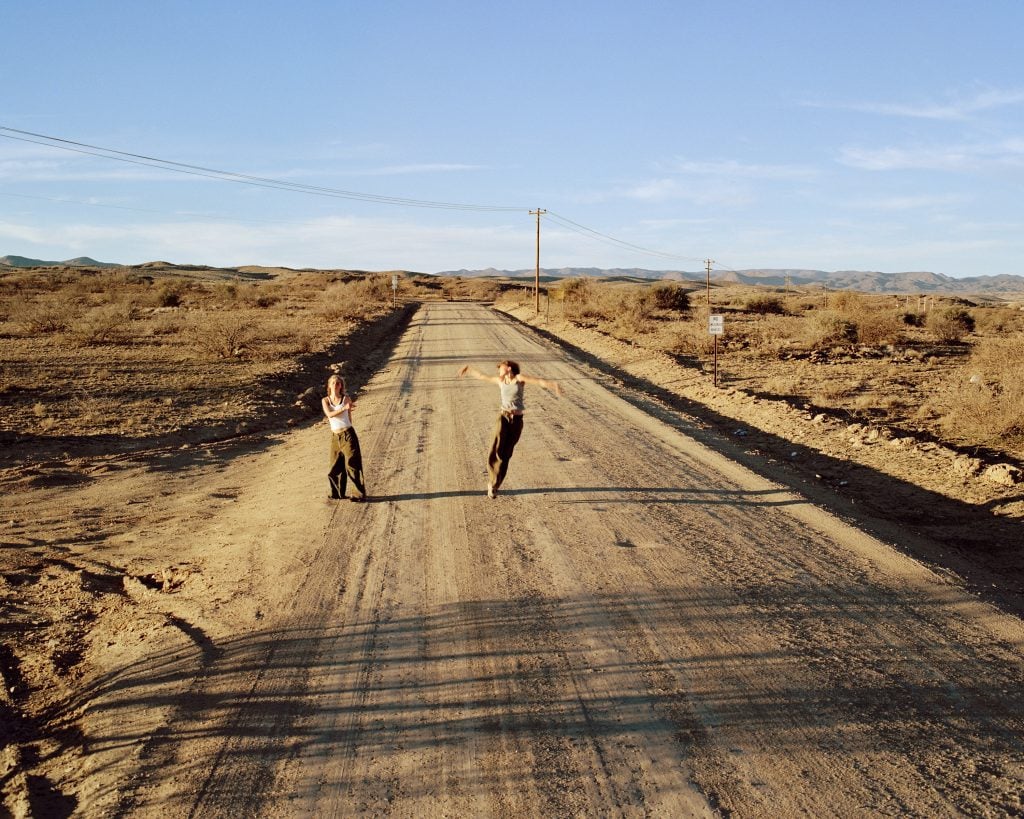
Justine Kurland, Broadway (Joy), 2001. Photo ©Justine Kurland, courtesy of the artist.
In terms of your own art community, are there any artists that you’ve been meeting with lately or starting to collect their work who you could share?
Some shows that I’m super excited about coming up are Ben Sledsens—he has a show coming up at Tim Van Laere Gallery [in Antwerp]. Also Tal R. Daniel Richter is an artist that I’m super excited about as well, who I don’t own and sometimes I never know if I ever will. For me, it’s just enough to be excited about it. I go from obsession to obsession. My love really is emerging artists. Braden Hollis is one of my favorite emerging artists at this point. She’s just so talented and I’m so excited to see where she goes.
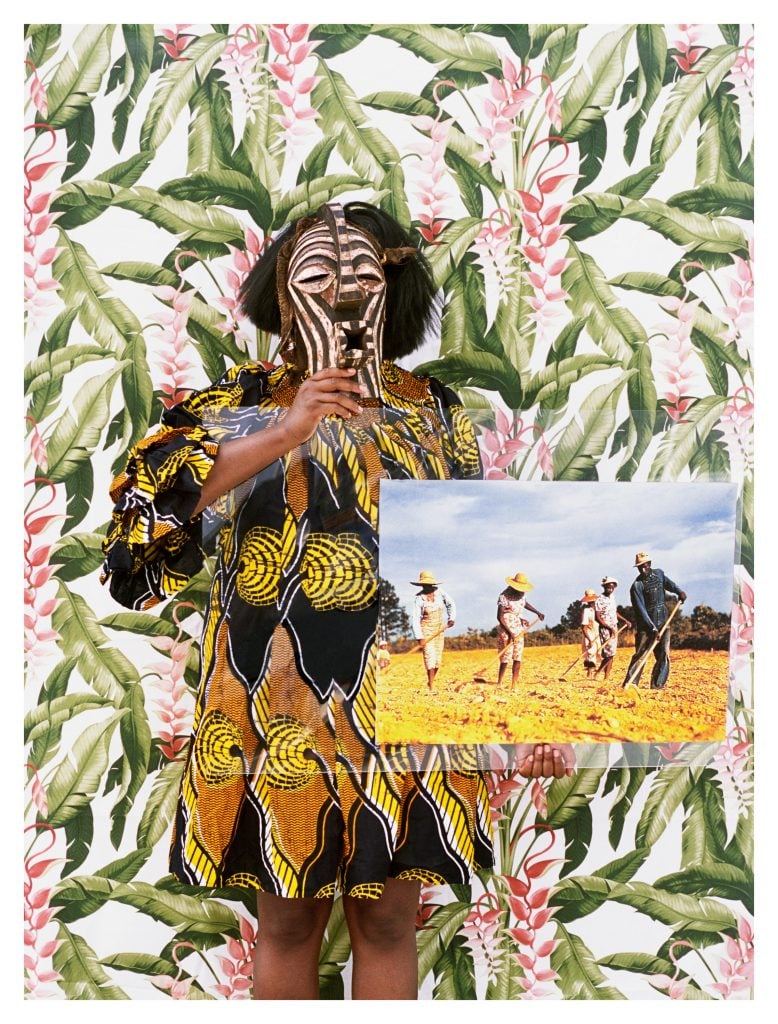
Xaviera Simmons, Sundown (Number 10), 2018. Photo ©Xaviera Simmons, courtesy of the artist and David Castillo
Your personal affinity for art is something that goes back many years. Can you encapsulate your art journey as it’s evolved over the years?
My art journey was definitely a personal one. I was always traveling the world but didn’t really know how to personally get involved. It was in my early thirties when I found a way in through a friend.
I was just asking “what should I do?” I was introduced to someone who started taking me around the galleries in L.A., and that was my first step. And then just buying things that I love—literally not knowing a thing and just starting out with what I loved and what I believed in, what I found beautiful, what made me feel good. And I think it’s just the perfect way to collect and to see art. That journey just went on from there, me learning more and creating a community of people that I talk to.
I don’t have an art advisor. I have to advise myself and do my own research, just me and my friends. I always spend a lot of time, too, looking back at all the artwork from previous exhibitions. It’s so interesting to see how your tastes change and evolve with time and the choices you would’ve made differently, possibly.
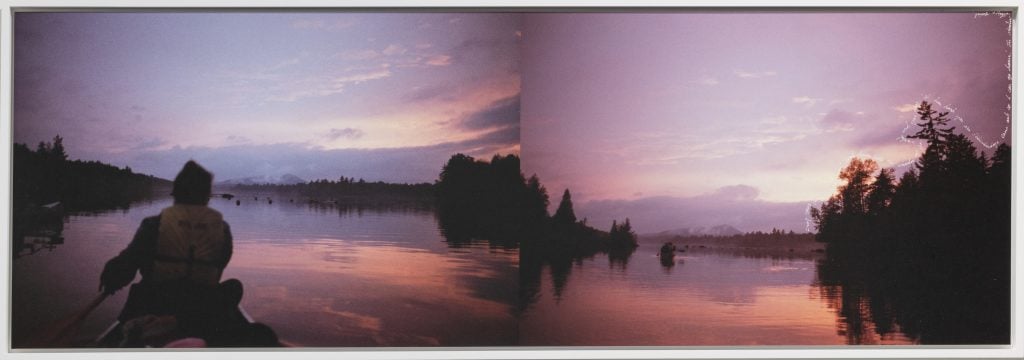
Sky Hopinka, Drop your prayers again, and look down into the window of the earth and you say, “Ah how dark you are, Hikiwárekega. Come out so I can go home. Collection of Molly Gochman, New York. Photo ©Sky Hopinka, courtesy of the artist.
And in terms of the making choices you differently, do you change what’s on view in your home often? Do you have a lot of things rotating in and out of storage or is it all pretty much on your walls?
No, I don’t change. I think it’s just because I love what I live with so much and it’s hard to take them out. And also my house is small, so there’s only so much room. But I’ve gotta convince myself to change it out sometimes!
“Widening the Lens: Photography, Ecology, and the Contemporary Landscape” is on view at the Carnegie Museum of Art,4400 Forbes Avenue, Pittsburgh, Pennsylvania, May 11, 2024–January 12, 2025.
